Guide de Voyage : Fjords de l'Est
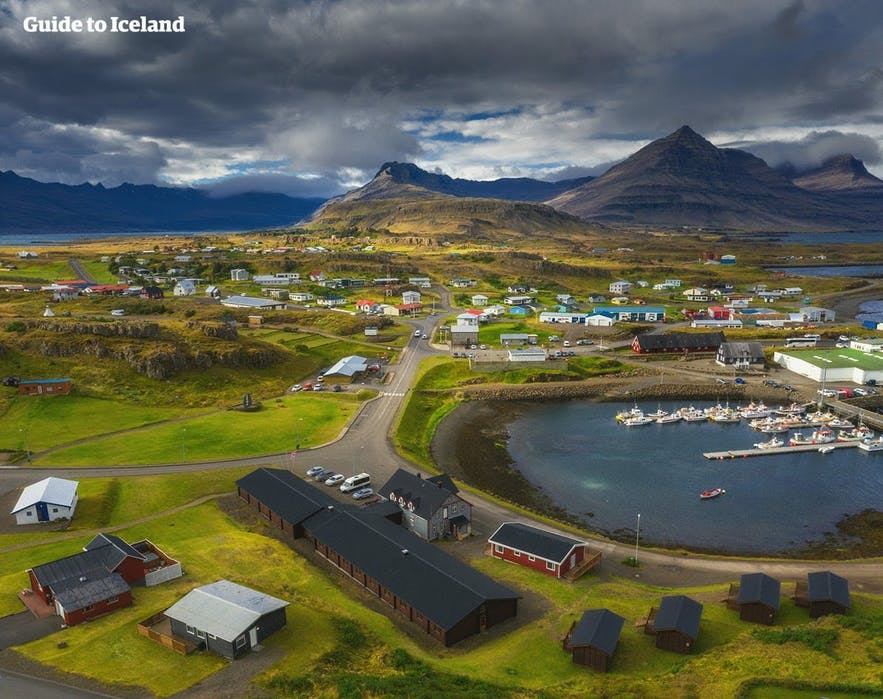
Out of the country's total population of 335,000 people, only an estimated 3.2% live in East Iceland. Locally referred to as "Austurland" or "Austfirðir", the whole area covers 22,721 square kilometers (8,773 square miles). Explore the region on a tour of the East Fjords. If you want to take the time to travel around this region, it's a good idea to book a hotel in the Eastfjords to use as your base to explore.
Nature in East Iceland
East Iceland has many narrow fjords, surrounded by steep cliffs. Fishing villages sit in most of them.
Often overlooked by visitors, the East Fjords represent the very best of what Iceland has to offer. Including fantastic scenery, remote fishing villages, sparkling lakes, dense forests and traditional farms.
The region boasts the sunniest weather in the country, as well as some of Iceland’s most well-known and loved wildlife.
This region is especially famous for its herds of wild reindeer. It is the only place in the country that reindeer live. Initially brought over for farming, the industry was never lucrative, and they have roamed free ever since.
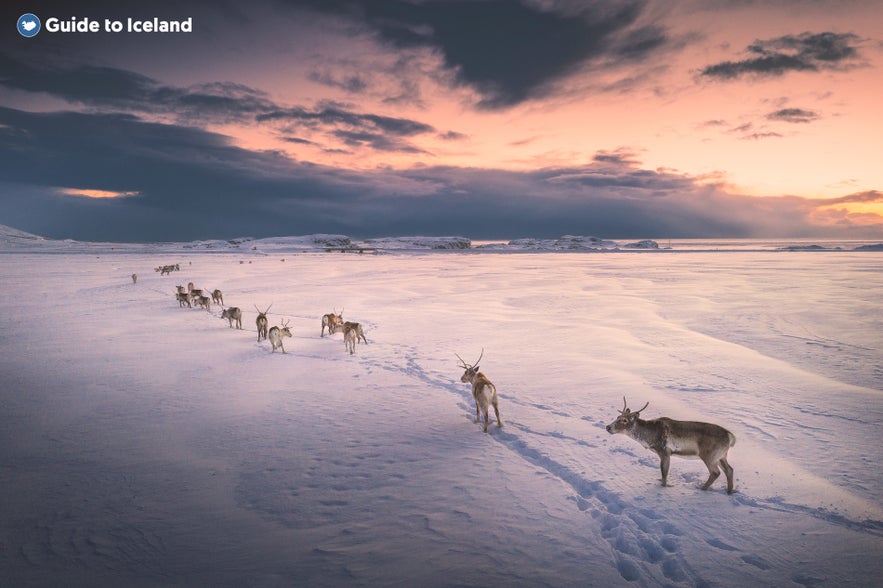
Migratory birds live both inland and in the cliffs in summer, including the elusive puffin.
Many rivers run through the district and by their estuaries, colonies of seals reside. The fertile waters also provide food to whales and dolphins, making them visible even from the side of the shore.
The impressive mountain Snӕfell (not to be confused with Snæfellsnes Peninsula in the West of Iceland) is Iceland's highest free-standing peak and sits in the East. Near here is the highland oasis of Eyjabakkar, one of the world's most significant nesting places for the pink-footed goose.
Vatnajökull, Europe's largest glacier, stretches to the borders of Eastern Iceland and is so large it is visible from many places throughout the region.
Breathtaking coastlines and the promise of tranquil solitude also bring visitors to East Iceland. It would make an ideal stop on your ring road adventure.
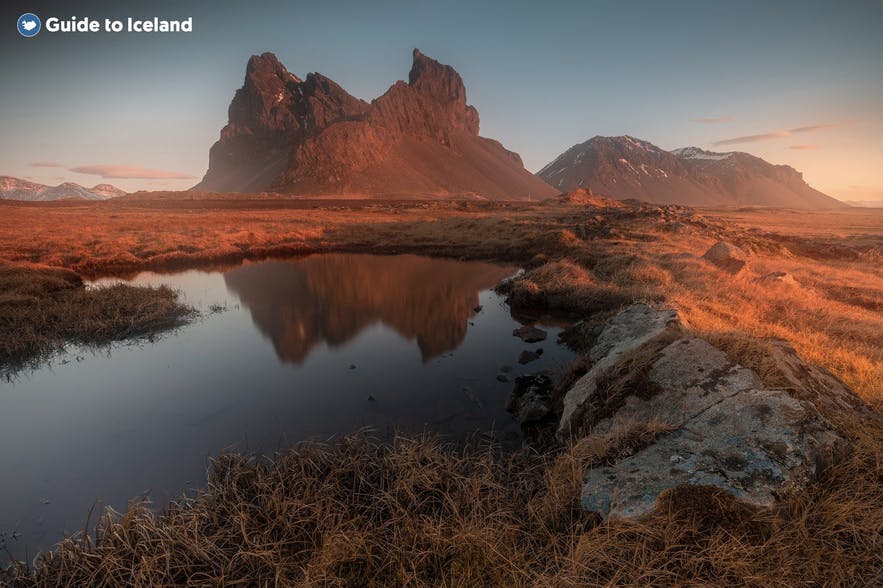
There are plenty of things to do in Iceland’s East Fjords. If you enjoy pleasant walks through nature, Borgarfjörður Eystri is a hiker’s paradise. Local folklore tells that this area is home to elves and Iceland’s ‘hidden folk’.
There are also incredible basalt rock formations in Studlagil Canyon. Though the canyon requires a hike to reach it, it’s a genuinely astonishing place for geologists and nature lovers alike.
The East of Iceland is also home to some beautiful waterfalls, such as Litlanesfoss and Hengifoss.
Egilsstaðir
East Iceland has only a few towns with vital services. The main one of these, considered to be the capital of the region, is Egilsstaðir.
Egilsstaðir has restaurants, museums, shops, petrol stations and an array of accommodation options to suit all budgets. It is also home to an airport, meaning those with limited time or without a driving licence can easily reach it from Reykjavík.
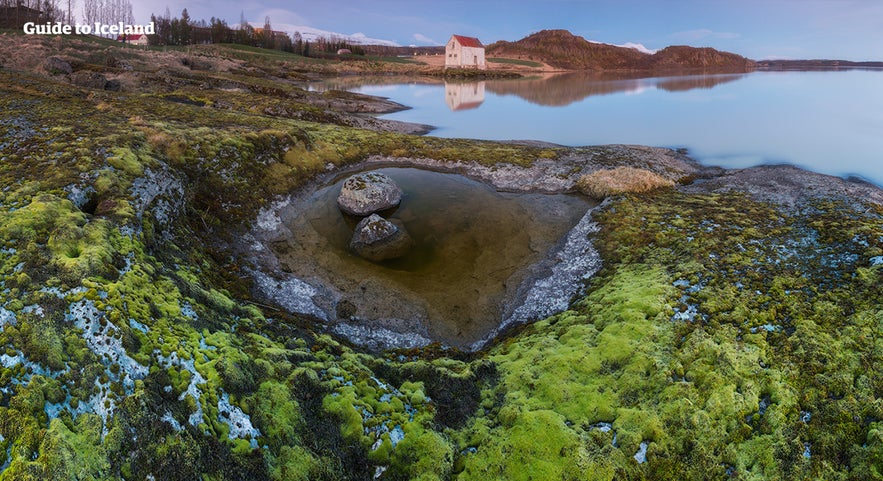
This small, idyllic town in the East of Iceland is famous for many reasons. The most popular things to do near Egilsstadir include hiking, visiting a swimming pool or Spa (Vok Baths is particularly special), visiting waterfalls, and exploring the quaint town. It also boasts a famous Heritage Museum. This gives visitors an insight into the lives of East Icelanders in days gone by.
The area is packed with fantastic cultural landmarks, such as Hallormsstaðarskógur, the country’s largest forest. This can be found just on the eastern shore of Lake Lagarfljót. Look closely enough at the lake, and you may spot a worm monster in the water.
Hallormsstaðaskógur covers 740 hectares. It is made up of over eighty different species of trees from all over the world. The rate it has grown at is astonishing, considering that in 1910 it was merely a small group of trees within a protected paddock.
Egilsstaðir also has an annual electronic music festival, Hringrás; the Orsteiti Town Festival; and a jazz festival.
For something a touch more relaxing, one could also take a soothing dip in the swimming pool at Selárlaug, near Bakkafjörður. The pool is surrounded by mountains and beautiful views over the fjord and is considered one of the most authentic experiences available in the region.
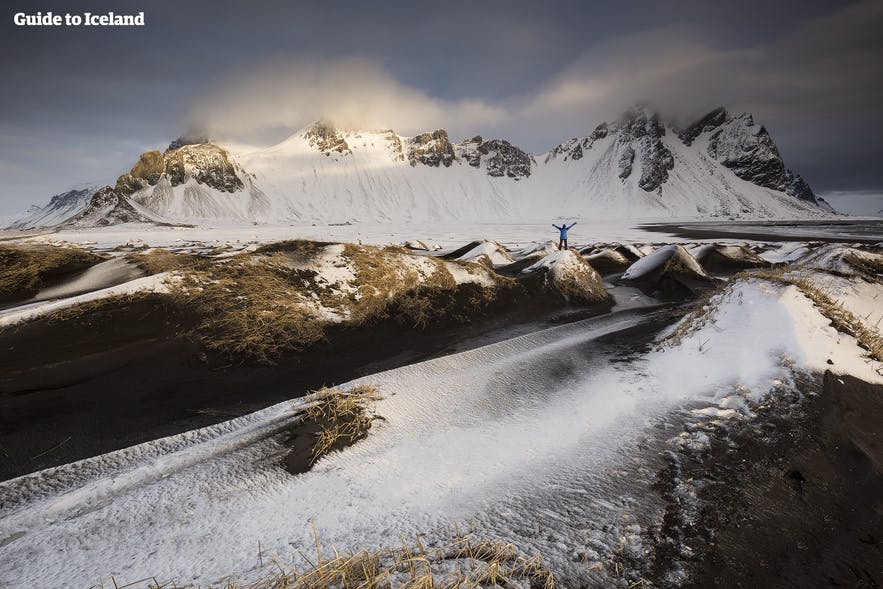
In the East Fjords in winter, you’ll have an excellent chance to see the Northern Lights from such remote areas as Egilsstaðir, weather permitting of course.
Seyðisfjörður
Those visiting Iceland by ferry from mainland Europe or the Faroe Islands will make port at Seyðisfjörður. The town has a small population of 700 people. It is famous for its ornate wooden architecture, Scandinavian influence and historical herring-fishing industry. Much of the timber used to develop Seyðisfjörður was shipped over by Norway ready-made in the 18th century.
In the town centre lies a rainbow-painted street, which leads to a famous blue church.
Seyðisfjörður is surrounded by pounding waterfalls, flat-top mountains and serene hiking trails, complemented by gorgeous panoramas over the adjacent fjord.
Other activities available from or near Seyðisfjörður include scuba diving, skiing, sea angling, paragliding and horseback riding. There are also several cultural exhibits to visit. These include the Fjarðarsel Power Plant Museum and Skaftfell Centre for Visual Arts.
Fáskrúðsfjörður
Fáskrúðsfjörður is a village with a population of just 700. It is nestled in the heart of the East Fjords and has a very distinct culture all of its own.
Its first settlers were French fisherman, and their legacy lives on in this small town. They first arrived in the mid-1800s. The Frenchmen built houses, a hospital and a harbour, which they considered to be all they would need for their time in Iceland.
They were quite settled here in this small coastal village. However, in the First World War, many Frenchmen were called into duty in defence of France. The town soon emptied of men. However, their heritage lives on.
It’s possible to visit the french hospital, where the full story of these French settlers can be learned. It has recently been renovated and stands as a hotel and a museum.
As a nod to the village’s founding fathers, the town continues to display signs in both Icelandic and French. It is also linked to a town in France called Gravelines.
Here they hold two parties every year to celebrate their connection to Iceland. The first is in spring when fisherman would set off to fish in Iceland. The second in autumn, as these men were returning to French shores.
In Fáskrúðsfjörður, the town celebrates its Frenchified connection in the height of summer. July is peaking fishing season, and so the celebrations tended to coincide with this.
For anglers visiting the area, fishing is readily accessible in the nearby Dalsá river.
Visitors are also advised to hike the path along Gilsá river towards the waterfall Gilsárfoss, where they can walk behind the cascading water.
Breiðdalsvík
Breiddalsvik is located south of Fáskrúðsfjörður. It is a small village with a population of just 140 people. This is an excellent location for people who enjoy hiking, and it’s a great spot to look out for wild reindeer, who are often spotted roaming the nearby area.
Visitors can also enjoy the black sand beach of the charming fishing village of Breiddalsvik. It’s possible to take a road trip to the longest and widest valley in Iceland, Breiðdalur.
Papey Island
Papey (“Friar’s Island”) is an uninhabited island located off the east coast of Iceland. The island is approximately 2 square kilometres (0.8 square miles). Its highest point measures 58 metres (190 feet) above sea level. Boat trips to Papey depart every summer from Djúpivogur.
The island is named after Gaelic monks (“The Papar”). These monks are thought to have inhabited the island long before the Norse settlement. Papey was lived on from the 10th century until the year 1966 when the island’s residents finally moved to the mainland.
For centuries, Papey’s residents had supported themselves on fishing for shark, hunting seals and puffins, and tending to their farmsteads. In later years, the residents would also harvest down from Eider Ducks living on the island.
Today, visitors to Papey can enjoy the large puffin colonies that still live on the island. It’s also interesting to see the remnants of the former settlement including a lighthouse, church and weather station. These all still exist much as they did in 1966.
Culture of East Iceland
One of the central points of culture in the East is the cultural and historical centre, Skriðuklaustur, in the Fljótsdalshérað district. In the Middle Ages, a monastery stood on this site. From then on it became the region’s religious centre. In the 20th century, the Icelandic author Gunnar Gunnarsson made it his home.
Gunnar wrote many masterpieces, such as Aðventa (The Good Shepherd), Svartfugl (The Black Cliffs) and Saga Borgaraettarinnar (The Saga of the One-Eyed Guest). He also wrote the autobiographical novel, Fjallkirkjan, which has been given a variety of different titles once translated, including The Church on the Mountain, Ships in the Sky and The Night and the Dream.
Festivals play a significant role in the culture of the East today. Seyðisfjörður hosts the annual music festival LungA. The settlement of Neskaupsstaður also hosts two highly popular annual festivals, Neistaflug and Eistnaflug.
East Iceland is also home to the Kárahnjúkar hydroelectric power station, which provides many of the towns with energy. The construction of this has led to a hot debate on Iceland’s ecological footprint. The debate continues today.
Lieux à proximité
Catégories populaires

Téléchargez la plus grande plateforme de voyage d'Islande sur votre téléphone pour gérer l'intégralité de votre voyage au même endroit
Scannez ce code QR avec l'appareil photo de votre téléphone, et cliquez sur le lien apparaissant pour avoir la plus grande plateforme de voyage d'Islande à portée de main. Ajoutez votre numéro de téléphone ou votre adresse e-mail pour recevoir un SMS ou un e-mail avec le lien de téléchargement.


















